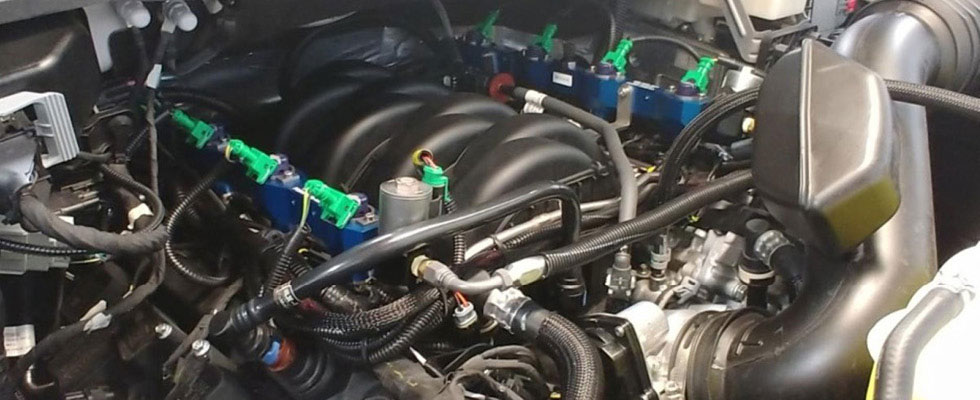
Propane autogas conversions often have the lowest cost of ownership of any fuel. Autogas conversions have substantially less upfront costs compared to compressed natural gas (CNG) and electric conversions. This is due largely to the difference in the cost of tanks; when comparing liquefied petroleum gas (LPG) tanks rated for 350 to 375 psi and CNG tanks rated for 3,500 to 4,500 psi — which are often carbon fiber reinforced — propane fits similar guidelines as those for gasoline.
For technicians, the learning curve is easy to understand. When working with other alternative fuels, expensive modifications to buildings are often required.
Examples of estimated fleet usage of propane in sectors optimal for propane autogas include:
- Shuttle buses — Average life span of 5 to 8 years, utilizing 3,000 to 8,000 gallons a year
- School buses — Average life span of 10 to 15 years, utilizing 2,500 to 8,000 gallons a year
- Package delivery trucks (UPS, DHL, FedEx, etc.) — Average life span of 7 to 15 years, utilizing 3,000 to 10,000 gallons a year
- Work trucks — Average life span of 5 to 7 years, utilizing 2,500 to 7,500 gallons a year
- Taxi or similar vehicle — Average life span of 5 to 10 years, utilizing 2,000 to 6,000 gallons a year
While autogas may not be the right fit for every fleet sector, the estimates above demonstrate how rapidly the return on investment can be achieved.
Domestic Fuels & the Illusion of Electric Vehicles
We believe a menu of domestic fuels in the transportation sector, including propane and natural gas in particular, is optimal for national security and the support and growth of our economy at reasonable costs. Electric vehicles (EVs) surely have their place in the smaller vehicle, metropolitan, limited driving sector. However, the illusion of EVs as the panacea is being shattered by reality in short order:
- The majority of U.S. electricity comes from natural gas or coal. Utilizing natural gas or its brother-fuel propane directly in engines is much more efficient and has fewer emissions.
- The energy — which consists mostly of diesel — utilized to mine the rare earth metals that comprise an EV battery is immense.
- China controls the majority of the world’s rare earth metals and electric EV supply chain.
- The amount of EV batteries that can be manufactured in the near future is nowhere near enough for the extensive projections of an EV world.
- The U.S. grid requires trillions of dollars of investment upgrades and decades of manufacturing and building to support EVs occupying only 10% of the U.S. vehicle population.
- More greenhouse gases are produced from the manufacturing of an EV than of an internal combustion engine vehicle due to the minerals required to make the battery.
- EV vehicle range is often not sufficient for fleet routes, especially when considering hot and cold weather, which can reduce range by as much as 40%.
For fleet vehicles, EVs are impractical and far too expensive. Pickup trucks and medium- and heavy-duty vehicles are a demographic where propane autogas has an opportunity to shine. If you are interested in incorporating autogas into your infrastructure, information on autogas and other alternative fuels, including incentives and rebates, is available at afdc.energy.gov/fuels/laws/LPG?state=US.
Why Certain Fleets Should Move to Propane Autogas
- Autogas will dramatically reduce fuel costs. Often the system return on investment (ROI) for fleets is 1 to 3 years — if not sooner — with the help of state and federal incentives.
- Propane supply in the United States is mostly domestic. As such, fleets have an important fuel security which is vital in an increasingly volatile world. This includes the possibility to lock in fuel pricing for optimal budgeting.
- Autogas will dramatically reduce emissions and play a key role in developing sustainability and the greening of fleets.
- Performance, torque, drivability and miles per gallon are comparable to gasoline.
ICOM North America expanded the propane autogas sector with the introduction of the patented ICOM Propane Liquid Injection System in 2004. The company provides system installation and a maintenance program for fleets utilizing ICOM factory technicians, the ICOM dealer network or their local service provider. Installation and training can often be done at the propane fleet’s site or at their local service shop.
Forthcoming ICOM technologies have the goal of facilitating a huge increase in autogas gallons. The ICOM Blue 3.0 Propane Liquid Injection System has numerous Environmental Protection Agency certifications, with others in process or planned. All platforms are available in bi-fuel, and some platforms are available in monofuel as well.
The ICOM Dynamic Dual Fuel System for diesel engines will be available soon in the U.S. and will use considerable amounts of autogas in sectors which usually use less propane, such as class 6, 7 and 8 trucks; construction, agriculture and mining vehicles and equipment; and large generators. Examples of estimated diesel dual fuel LPG gallons at average displacement of 30% include:
- Long haul buses — Life span 15 years, 6,500 to 10,000 gallons a year
- Mining equipment (cat 777) — Life span 10 to 20 years, 13,000 to 15,000 gallons a year
- Pickups/towing/hauling — Life span 10 years, 2,500 to 6,000 gallons a year
- Large generators and equipment of 10-plus years — Life span often 3,000 to 10,000 gallons a year


